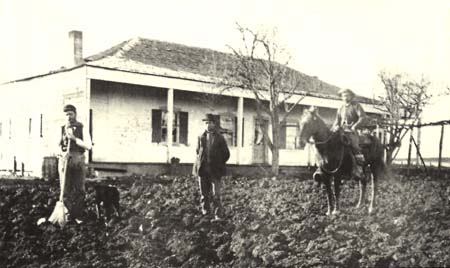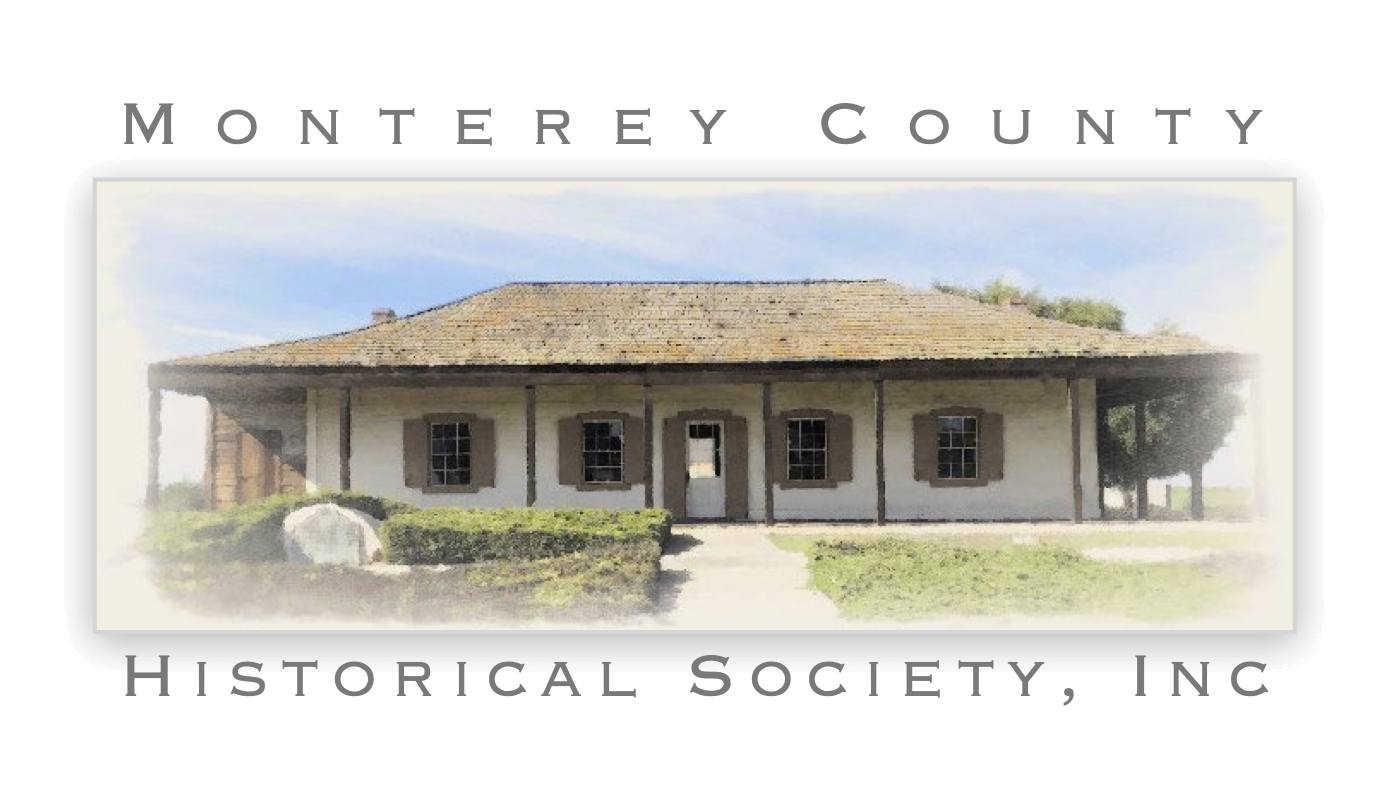California Historical Landmark #870
The Boronda Adobe was built by José Eusebio Boronda between 1844 and 1848 in the grasslands of the lower Salinas Valley. Twenty years later, Salinas City was founded, and in the 130 years since then the town has grown and spread to within a few hundred yards of the Adobe.
José Eusebio was the third son of José Manuel Boronda and Maria Gertrudis. He was christened in 1808 at Mission Santa Clara. In 1831, Eusebio married Maria Josefa Buelna. By 1836, they had six children and seven more followed.

Land in early California was abundant, so land grants were bestowed as “gifts” from the Mexican government to those who had a military or civil service record. The Borondas existed by subsistence farming and husbandry, bartering goods, and outside employment. They were respected in the early “Californio” community and they often held minor governmental positions.
Boronda’s Adobe differs from other adobes in its wood-shingled roof which slopes 4 ways (rather than red clay tiles), a wide, open veranda completely encircling the house, white-washed, open beamed ceilings and two indoor fireplaces with carved wood mantle pieces. It was originally one room, with the fireplaces heating the open area from either end. Soon after the adobe was built, wooden partitions were added setting apart a bedroom and an eating area. The side porches were boarded in to provide additional space.
The center room was a multi-purpose “sala” where most family activities took place. There was very little furniture in the “sala” to provide more space. It was common to store bedding in trunks during the day. Boys and young men may have slept outside or upstairs in a low storage loft. The Borondas had an outdoor kitchen, called a “ramada.” This kept the heat and smoke of the wood fires out of the house. At the turn of the 20th century, a lean-to kitchen was added and the back porch was boarded in to provide more work space where they manufactured their own leather, metal and wood items. The glass windows and doors were probably added during the 1870s or 1880s. Food was grown largely on the rancho in fields cultivated near the adobe. Since there was no refrigeration in the mid-1800s, foods were preserved through drying and smoking, and were stored in the loft.
Because of the size of the land grants, the distance between neighbors, and the method of transportation (horseback and ox-drawn carts), any visitors to the Adobe stayed overnight and sometimes longer. In the evening, the “sala” was scene of music and dancing. Californios engaged in deer, elk, and bear hunting, horseback riding and racing. Eusebio Boronda acquired a certain amount of fame as a grizzly bear hunter. Women sewed, made lace and embroidered. Housework and cooking were major undertakings since large families were common. Cornmeal was ground for tortillas. Beef, beans, and tortillas were a late evening meal typically served.

In the 1850s, the Boronda family life was strained by the attempt to prove land ownership to the American government. Also, the children had reached maturity and tried to gain control of some of Eusebio’s lands. Boronda’s original grant from the Mexican government was for 6,700 acres. By 1860, his grant was reduced to 2,229 acres. As a result of the tension, Eusebio left his family for 19 months, deeding his property and most of his belongings to his wife. In 1864, Maria died. Several years later, José Eusebio successfully sued his children, regaining title to his land.
The last of the Boronda’s to live in the Adobe was Ygnacio Boronda (Eusebio’s grandson) and his family in the 1920s. In 1929, the property was sold to Charles Brooks who built his home behind the Adobe.
In 1972, the Monterey County Historical Society acquired the Boronda Adobe and five acres through a combined gift and purchase from Mrs. Wilson. The building has was completely restored and dedicated as a museum in 1976. It is both a California Historical Landmark and listed in the National Register of Historic Places.
Although it was damaged during the 1989 Loma Prieta earthquake, the Adobe has been repaired and has been completely renovated by the Colonial Dames of California, Monterey Chapter. Photographs of the setting and interior are found here.


